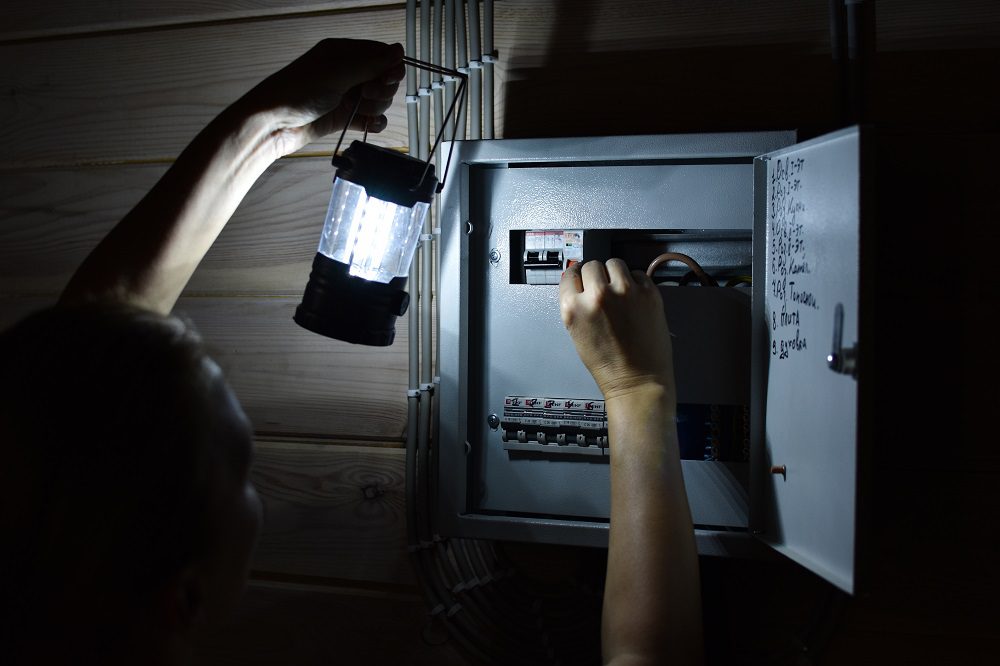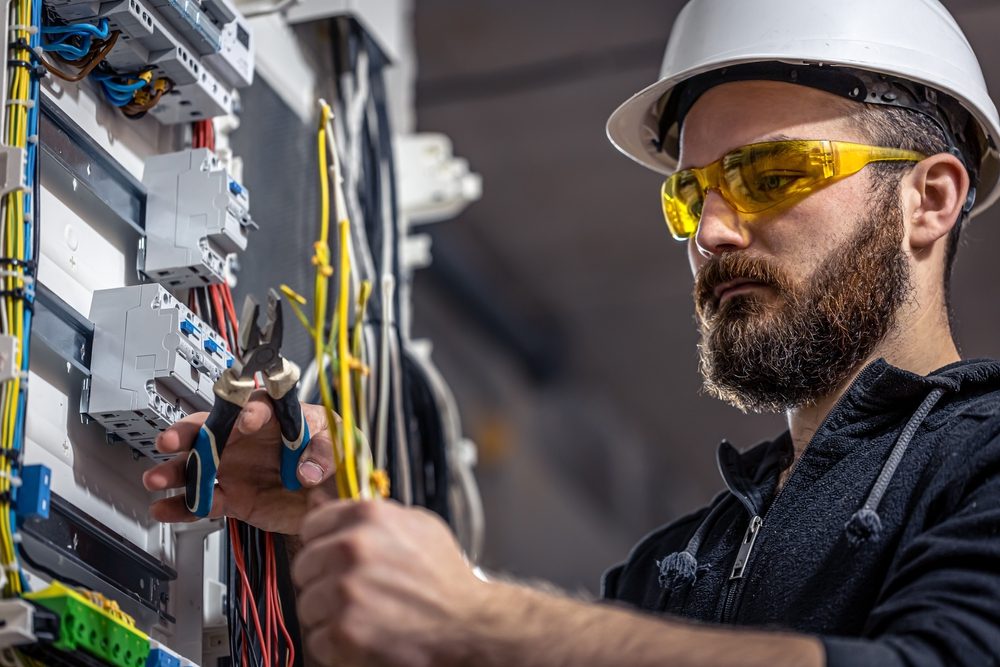A breaker that trips once in a while is doing its job. A breaker that trips daily is warning about heat, overload, or a fault that can lead to damage or fire. Homeowners across Charlotte see this after adding a new appliance, plugging space heaters into older circuits, or after a storm. Knowing what’s normal and what needs a licensed electrician protects the home and keeps interruptions short.
Ewing Electric Co serves Charlotte neighborhoods every day, from Dilworth and Plaza Midwood to Ballantyne, SouthPark, and Steele Creek. The team handles urgent calls and scheduled electrical repair in Charlotte NC, including nuisance tripping, panel upgrades, and damaged wiring.
Why breakers trip in the first place
A circuit breaker opens to stop more current from flowing than the wiring can safely carry. It protects the insulation and the devices on that run. The three most common triggers are overloads, short circuits, and ground faults. Overloads build heat over minutes. Shorts and ground faults happen in an instant, often with a pop or spark.

In a typical Charlotte home, 15-amp lighting circuits and 20-amp kitchen and bath circuits share outlets and lights across several rooms. One hair dryer or vacuum usually runs fine. Two space heaters on the same run will push it over the limit. Age, loose terminations, and moisture make the problem worse.


Quick checks a homeowner can do safely
A homeowner can rule out simple causes without tools. These steps help isolate an overload from a deeper fault.
- Unplug countertop appliances, space heaters, and window AC units on the affected circuit. Reset the breaker. Plug items back one at a time and wait a few minutes between. If it trips when a specific device runs, stop using that device or move it to a dedicated circuit. Check for obvious damage at outlets and cords: heat discoloration, a plastic smell, cracked plates, or a plug that feels hot. Do not use damaged devices or receptacles.
If the breaker trips again with nothing plugged in, or trips instantly when reset, stop and call for electrical repair in Charlotte NC. That pattern points to a short, ground fault, or a failing breaker.
Red flags that call for a licensed electrician
A few patterns separate a routine overload from a hazard. These are the moments to bring in a pro who knows Charlotte’s older plaster-walled homes, 1960s aluminum branch circuits, and newer AFCI/GFCI code needs.
- The breaker trips instantly with a snap when you reset it. That suggests a shorted conductor or a failed device. You smell burning at the panel or an outlet, or the cover feels hot. Heat means resistance at a loose connection. Lights flicker across multiple rooms or dim when major appliances start. This can indicate a poor neutral or service issue, not just a single circuit problem. The tripping circuit serves the kitchen, bath, garage, or outdoors and includes GFCI devices that will not reset. Water and GFCI faults require proper testing. The panel shows corrosion, rust, or buzzing. In Charlotte’s humid summers and after roof leaks, panels can collect moisture that weakens breakers.
An electrician will test the circuit with a clamp meter and an insulation resistance tester, inspect terminations, and confirm breaker sizing against wire gauge. That combination finds the fault without guesswork.
Common Charlotte scenarios from the field
Older homes in Elizabeth and NoDa often still have two-wire circuits with no ground. Homeowners add three-prong adapters, then plug in computers and heaters. The breaker trips more often because those outlets were never sized for that load. The correct fix is to run new grounded circuits and install AFCI/GFCI protection where required.
Townhomes in University City and South End built in the 2000s may have arc-fault breakers. These trip when they detect arcing from loose lamp cords, cheap power strips, or stapled Romex that is pinched. Sometimes the fix is replacing a worn cord. Other times the electrician corrects a backstabbed receptacle or replaces a troublesome AFCI with a current model that filters nuisance trips.
Detached garages in Matthews and Mint Hill often share a long run from the main panel. Add a chest freezer and a compressor, and the breaker exceeds its rating on startup. The practical solution is a dedicated 20-amp circuit or a small subpanel to split loads. That prevents repeated trips and protects the motor windings.
How an electrician diagnoses a tripping breaker
A proper diagnosis follows a simple path. The electrician maps the circuit, determines the total connected load, and inspects every termination point. Expect panel cover removal, receptacle and switch checks, and a test of the breaker itself. If the breaker feels loose or has a weak spring, it gets replaced with the correct brand and model so it seats firmly on the bus.
Load calculations matter. A 1,500-watt space heater pulls about 12.5 amps. Add a hair dryer at 12 amps and a TV at 1 amp, and a 15-amp breaker will trip after a few minutes as heat rises. The fix is not a larger breaker. It is redistributing loads or installing a new circuit with the right wire size.
If insulation resistance between hot and neutral is low, the electrician isolates segments to find a staple through the cable, a water-damaged box, or a faulty device. In crawl spaces around Myers Park and Cotswold, rodents occasionally chew cable jackets; that shows up on testing and visual inspection.
When upgrading the panel solves the problem
If a home still uses a Federal Pacific, Zinsco, or an overloaded 100-amp panel, tripping can be a symptom of a bigger capacity issue. Heat at the bus, double-lugged breakers, and limited spaces force unsafe add-ons. A 200-amp panel upgrade gives room for dedicated kitchen, laundry, EV charger, and HVAC circuits.
In SouthPark and Ballantyne where additions and electrical repair cost outdoor kitchens are common, panel upgrades are a frequent part of electrical repair in Charlotte NC. The work includes a permit, utility coordination, service mast or meter base work, surge protection, and labeling. A well-labeled panel helps future troubleshooting and real estate inspections.
GFCI, AFCI, and dual-function breakers explained
GFCI protection guards people by comparing current on hot and neutral and tripping quickly on imbalance, which often points to moisture or a ground fault. Kitchens, baths, garages, exterior outlets, and basements require it. AFCI protection looks for arcing patterns that start fires in cords and inside walls. Many newer breakers combine both. False trips happen with worn cords or older appliances, but repeated trips deserve testing rather than swapping parts blindly.
If a dual-function breaker in a Providence Plantation home trips overnight with nothing on, the electrician may separate loads, replace a damaged receptacle, or relocate a problematic appliance to a standard breaker with a GFCI outlet if code allows in that location. The key is matching protection to the space and the load.
Safety first: what not to do
Never replace a 15-amp breaker with a 20-amp to stop tripping without changing the wire. The wire size dictates breaker size. Upsizing risks overheated conductors inside walls. Also avoid multiple power strips or daisy-chained extension cords. Heat builds at each weak connection.
Reset a breaker only once or twice. If it trips again, stop. Repeated resets mask the source and add stress to the breaker mechanism. If water has entered an exterior outlet after a storm in Lake Norman or a pressure wash, let it dry and have the outlet checked. Moisture can linger in boxes and cause hidden faults.
What service looks like with Ewing Electric Co
Homeowners contact Ewing with the breaker number, the rooms that went dark, and any smells or sounds noticed. A dispatcher provides a same-day or next-day window for most Charlotte ZIP codes. The electrician arrives with the panel brand parts stocked for common replacements: Square D, Eaton, Siemens, and GE. After testing, the tech explains findings in plain terms, from “this outlet was backstabbed and arcing” to “your kitchen loads sit on one 15-amp run; we recommend a new 20-amp small appliance circuit.”
If work involves permits, Ewing pulls them and schedules inspections with Mecklenburg County. Typical repairs range from 30 minutes to a few hours. Panel upgrades and service changes usually take one day, with power restored the same afternoon in most cases. Pricing is clear before work starts.
Costs, timelines, and practical expectations
Simple device or breaker replacements often fall in modest ranges. Running a new dedicated circuit for a microwave or space heater solution takes a few hours depending on attic or crawlspace access. Panel upgrades, surge protection, and load balancing take longer but reduce nuisance tripping and improve safety for years. An honest estimate weighs the immediate repair against long-term needs, especially if EV charging or a kitchen remodel is in the plan.
Homes with plaster walls, finished basements, or tight crawlspaces may need creative routing to keep walls intact. That is where experience in Charlotte construction styles saves time and mess. The goal is a safe fix with minimal disruption.
Ready for fast help in your neighborhood
If a breaker keeps tripping in Dilworth, Plaza Midwood, NoDa, South End, University, Steele Creek, or Ballantyne, Ewing Electric Co can diagnose and resolve the cause the right way. For electrical repair in Charlotte NC, call or book online for a same-day assessment. One visit can stop the cycle of resets and protect the home from heat and hidden damage.
Ewing Electric Co provides dependable residential and commercial electrical services in Charlotte, NC. Family-owned for over 35 years, we handle electrical panel upgrades, EV charger installation, generator installation, whole-home rewiring, and 24/7 emergency repairs. Our licensed electricians deliver code-compliant, energy-efficient solutions with honest pricing and careful workmanship. From quick home fixes to full commercial installations, we’re known for reliable service done right the first time. Proudly serving Charlotte, Matthews, Mint Hill, and nearby communities.
Ewing Electric Co
7316 Wallace Rd STE D
Charlotte,
NC
28212,
USA
Phone: (704) 804-3320
Website: https://ewingelectricco.com/ | Google Site
Social: Facebook | Instagram | Twitter
Map: View on Google Maps